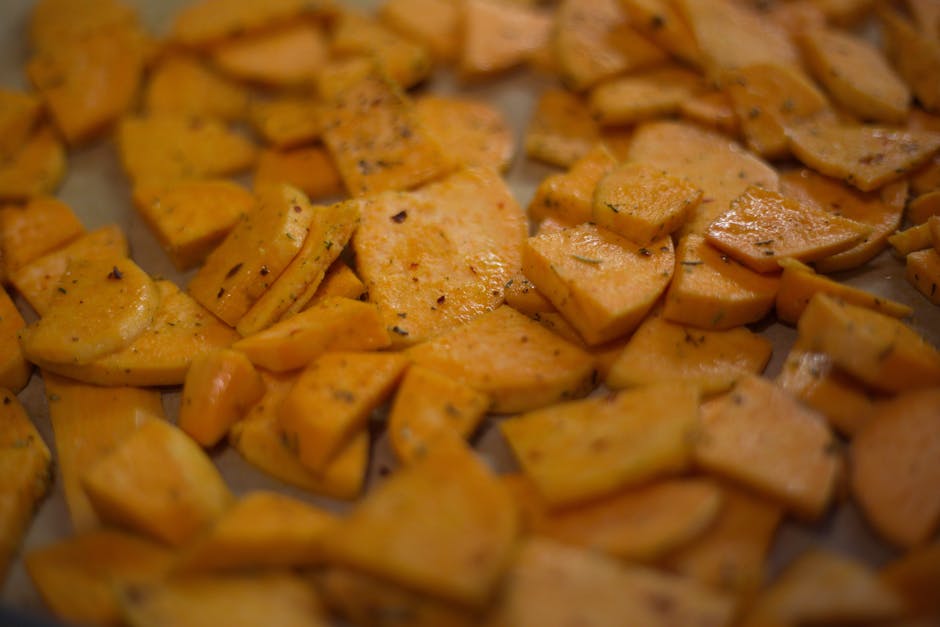Bacon-wrapped chicken bites, a seemingly simple yet undeniably delicious appetizer, lack a definitive, singular origin story. Unlike dishes with centuries of documented history, their rise to popularity is more recent, a testament to the enduring appeal of combining two universally loved ingredients: crispy bacon and juicy chicken. While pinpointing a specific inventor is impossible, their emergence likely coincides with the growing popularity of finger foods and appetizer buffets in the latter half of the 20th century. The ease of preparation and the impressive flavor profile quickly propelled them to become a staple at parties, game days, and casual gatherings. Their widespread appeal stems from their versatility; they can be easily adapted to suit various tastes, incorporating different seasonings, sauces, and even cheeses.
The cultural significance of bacon-wrapped chicken bites lies primarily in their embodiment of casual, celebratory eating. They are not a dish tied to a specific region or tradition, instead representing a global trend towards convenient, flavorful, and visually appealing finger foods. Statistics on food trends show a significant increase in the consumption of appetizers and “snackable” meals, reflecting a shift in dining habits towards more informal gatherings and social events. This trend has created a fertile ground for recipes like bacon-wrapped chicken bites to flourish, becoming a ubiquitous element within this culinary landscape.
Interestingly, the individual components – bacon and chicken – possess rich histories and cultural significance in their own right. Bacon, a cured pork product, holds a prominent place in many cuisines globally, appearing in breakfast dishes, sandwiches, and countless other preparations. Chicken, on the other hand, is a versatile protein source consumed throughout the world, valued for its leanness and adaptability. The combination of these two ingredients represents a culinary fusion, seamlessly blending the savory saltiness of bacon with the tender succulence of chicken. This simple yet effective pairing speaks to the power of combining familiar flavors to create something both familiar and exciting, a key factor in the enduring popularity of bacon-wrapped chicken bites.
Ingredients and Measurements
This recipe yields approximately 24 bacon-wrapped chicken bites. Adjust ingredient quantities proportionally for larger or smaller batches. The quality of your ingredients significantly impacts the final flavor, so choose wisely!
Chicken Breast: 1 pound boneless, skinless chicken breast. Using boneless, skinless chicken breasts ensures even cooking and prevents overly chewy bites. Avoid using frozen chicken; thaw completely and pat dry with paper towels before proceeding. This helps the bacon adhere better and promotes crispier results.
Bacon: 1 pound center-cut bacon. Center-cut bacon has a better ratio of meat to fat, resulting in crispier bites with less shrinkage. Choose high-quality bacon for the best flavor. If your bacon is thick-cut, you may need slightly more to wrap each chicken piece effectively.
Toothpicks or Wooden Skewers: Approximately 24. These are essential for securing the bacon around the chicken. Avoid using metal skewers as they can conduct heat unevenly and potentially burn. Wooden skewers or toothpicks are preferable for even cooking.
Seasoning Blend: This is where you can personalize your recipe! Here’s a suggestion, but feel free to experiment:
- 1 teaspoon garlic powder
- 1 teaspoon onion powder
- 1/2 teaspoon paprika
- 1/2 teaspoon black pepper
- 1/4 teaspoon cayenne pepper (optional, for a little heat)
- 1/2 teaspoon salt
Note: Adjust the seasoning to your preference. Taste the seasoning blend before applying it to the chicken to ensure it’s balanced. You can also add other herbs and spices like thyme, rosemary, or oregano for a more complex flavor profile.
Optional additions: Consider adding a touch of brown sugar to your seasoning blend for a hint of sweetness to complement the savory bacon. A drizzle of maple syrup during the last few minutes of baking can add a delicious glaze. Experiment and find your perfect combination!
Important Note on Measurement: While precise measurements are provided for the seasoning blend, the chicken breast and bacon amounts are approximate. The number of chicken bites you get will depend on the size of the chicken pieces you cut. Aim for bite-sized pieces, roughly 1-1.5 inches in size, to ensure even cooking.
Equipment List
Making delicious bacon-wrapped chicken bites requires the right tools to ensure efficient and safe preparation. This equipment list details everything you’ll need, from prep to cooking and serving. Proper equipment is crucial for achieving perfectly cooked, crispy chicken bites.
First, you’ll need a good quality cutting board, ideally large enough to comfortably accommodate your chicken breasts. A size of at least 12 x 16 inches is recommended. Use separate cutting boards for raw and cooked meats to prevent cross-contamination. A sharp chef’s knife (approximately 8 inches) will ensure clean, even cuts of the chicken, leading to uniform cooking. A smaller paring knife can be helpful for trimming excess fat or skin.
For measuring ingredients accurately, you’ll need a set of measuring cups and spoons. Precision in measuring ensures consistent flavour and texture. A medium-sized mixing bowl (approximately 3-quart capacity) is perfect for marinating the chicken if desired. You’ll also require a shallow dish or plate for holding the cooked bacon bits, if using pre-cooked bacon. If using raw bacon, this step is unnecessary.
Cooking the chicken bites requires a baking sheet. A standard 18 x 26 inch half-sheet pan is ideal, allowing for proper air circulation during baking. Line your baking sheet with parchment paper for easier cleanup and to prevent sticking. Consider using a wire rack placed on top of the baking sheet to ensure even browning and crisping of the chicken from all sides. A meat thermometer is essential for ensuring the chicken is cooked to a safe internal temperature of 165°F (74°C). Do not rely solely on visual cues for doneness; use a thermometer to guarantee food safety.
Finally, you’ll need tongs or a spatula for carefully handling the hot chicken bites. Once cooked, you can use a serving platter to showcase your delicious creation. Consider using toothpicks to secure the bacon, which should be removed before serving. Always exercise caution when handling hot food and sharp utensils. This complete equipment list ensures a smooth and successful bacon-wrapped chicken bite cooking experience.
Chicken Preparation
Begin by selecting approximately 1 pound of boneless, skinless chicken breasts. Ensure the chicken is fresh and of high quality for optimal flavor and texture. Frozen chicken can be used, but it must be completely thawed before proceeding. Thawing in the refrigerator overnight is the safest and most recommended method.
Once thawed, place the chicken breasts on a clean cutting board. Using a sharp knife, cut each breast into bite-sized pieces, roughly 1 inch by 1 inch. Consistent sizing is crucial for even cooking. Aim for uniformity to prevent some pieces from overcooking while others remain undercooked.
After cutting, place the chicken pieces in a medium-sized bowl. Season generously with salt and freshly ground black pepper. A good starting point is 1 teaspoon of salt and ½ teaspoon of black pepper per pound of chicken. Adjust to your taste preference. You can also add other seasonings at this stage, such as garlic powder, onion powder, paprika, or your favorite poultry seasoning blend. About 1 teaspoon of a combined seasoning blend would be appropriate.
For enhanced flavor, consider marinating the chicken. A simple marinade can be made by whisking together 2 tablespoons of olive oil, 1 tablespoon of lemon juice, and ½ teaspoon of dried oregano. Allow the chicken to marinate for at least 30 minutes, or up to 2 hours in the refrigerator. This step is optional but highly recommended as it infuses the chicken with moisture and flavor, resulting in more succulent bites.
Before wrapping the chicken in bacon, pat the pieces dry with paper towels. This is essential for ensuring the bacon crisps properly and doesn’t become soggy. Excess moisture will prevent the bacon from rendering its fat effectively.
If you’re using wooden skewers to assemble the chicken bites (optional), soak them in water for at least 30 minutes before use. Soaking prevents the skewers from burning during baking or frying.
Now your chicken is ready for the next step: wrapping with bacon!
Bacon Preparation
Proper bacon preparation is crucial for achieving perfectly crispy, flavorful bacon-wrapped chicken bites. We’ll be using approximately 1 pound of bacon, which should be enough for about 2 pounds of chicken. The type of bacon you choose will impact the final flavor, so consider your preferences. Thick-cut bacon renders more fat and provides a richer flavor, while thinner-cut cooks faster and crisps up more readily.
Begin by removing the bacon from its packaging and laying it flat on a clean surface. Avoid overcrowding the bacon; this will hinder proper cooking and result in unevenly cooked bacon. If your bacon slices are particularly large, you can carefully cut them in half lengthwise to achieve more manageable sizes. This will also ensure each chicken bite is adequately covered.
Pay attention to the temperature of your bacon before wrapping the chicken. If the bacon is too cold, it may not crisp up properly during the cooking process. You can achieve optimal results by allowing the bacon to sit at room temperature for about 15-20 minutes before wrapping. This allows the bacon to come to a closer temperature equilibrium with the chicken, leading to more even cooking.
If you prefer extra crispy bacon, you can partially pre-cook it before wrapping. This method involves laying the bacon slices on a baking sheet lined with parchment paper and baking them in a preheated oven at 400°F (200°C) for about 5-7 minutes. Keep a close eye on the bacon during this pre-cooking stage to prevent burning. The goal is to partially render the fat and crisp the edges slightly, not to fully cook it through.
Alternatively, you can skip the pre-cooking step completely and rely on the baking process to cook the bacon thoroughly. This method is often easier for beginners and works well if you’re already comfortable with baking the chicken bites for a longer period. However, be mindful that the cooking time may need to be adjusted to ensure the bacon is fully cooked and crispy.
Once you’ve decided on your bacon preparation method (pre-cooked or not), you’re ready to begin wrapping your chicken bites! Remember, the goal is to create a neat and secure wrap that keeps the bacon in place during cooking. Avoid wrapping the chicken too tightly, as this can prevent even cooking and lead to dry chicken.
Assembly Instructions
Once you’ve prepared your chicken and bacon, it’s time to assemble these delicious bites! This process is straightforward but requires a light touch to ensure even cooking and prevent breakage. We recommend working in batches to avoid overcrowding your baking sheet.
Begin by preheating your oven to 400°F (200°C). Line a baking sheet with parchment paper for easy cleanup and to prevent sticking. This is a crucial step for even baking and effortless removal of your finished bites.
Take 1 pound of boneless, skinless chicken breasts and cut them into 1-inch cubes. Ensure the chicken pieces are relatively uniform in size for even cooking. If some pieces are significantly larger than others, they may not cook through completely before the smaller pieces become overcooked.
Next, prepare your bacon. You’ll need about 8-10 slices of bacon, depending on the size of your chicken cubes and your desired bacon coverage. Cut each slice of bacon in half or thirds lengthwise to create long, thin strips. This ensures you have enough bacon to wrap each chicken bite securely.
Now, for the assembly! Take one chicken cube and wrap it tightly with a strip of bacon. Overlap the bacon slightly to ensure the chicken is completely covered. Secure the bacon by tucking the end underneath or using a toothpick if necessary (remember to remove toothpicks before serving!). Repeat this process for all the chicken cubes.
Arrange the bacon-wrapped chicken bites on the prepared baking sheet, leaving a small space between each bite to allow for even airflow during baking. Avoid overcrowding the baking sheet, as this can lead to uneven cooking and steaming instead of crisping. If necessary, use two baking sheets to ensure proper spacing.
Before placing the baking sheet in the oven, consider brushing the bacon with a little maple syrup or honey for added sweetness and glaze. This is optional, but highly recommended for an enhanced flavor profile. A light brushing is sufficient; you don’t want to drown the chicken in syrup.
Once all the chicken bites are arranged, place the baking sheet in the preheated oven and bake for 20-25 minutes, or until the chicken is cooked through and the bacon is crispy. Use a meat thermometer to ensure the chicken reaches an internal temperature of 165°F (74°C) for food safety. Cooking times may vary depending on your oven and the size of your chicken cubes.
Remove from the oven and let the bacon-wrapped chicken bites rest for a few minutes before serving. Enjoy!
Cooking Instructions (Oven/Air Fryer/Pan-frying)
These bacon-wrapped chicken bites can be cooked in three different ways, offering flexibility depending on your equipment and preference. Choose the method that best suits your needs and follow the instructions carefully for perfectly cooked, crispy bites.
Oven Method:
Preheat your oven to 400°F (200°C). Line a baking sheet with parchment paper for easy cleanup. Arrange the bacon-wrapped chicken bites in a single layer, ensuring they aren’t overcrowded. Overcrowding will prevent even cooking and result in soggy bacon. Bake for 20-25 minutes, or until the chicken is cooked through (internal temperature reaches 165°F/74°C) and the bacon is crispy. Use a meat thermometer to ensure the chicken is thoroughly cooked. For extra crispy bacon, broil for the last 1-2 minutes, keeping a close eye to prevent burning.
Air Fryer Method:
Preheat your air fryer to 400°F (200°C). Arrange the bacon-wrapped chicken bites in a single layer in the air fryer basket. Avoid overcrowding; cook in batches if necessary. Air fry for 12-15 minutes, flipping halfway through, until the chicken is cooked through (internal temperature reaches 165°F/74°C) and the bacon is crispy. Cooking time may vary depending on your air fryer model. Check for doneness frequently during the last few minutes.
Pan-frying Method:
Heat 1 tablespoon of olive oil or cooking spray in a large skillet over medium-high heat. Carefully place the bacon-wrapped chicken bites in the skillet, ensuring they aren’t overcrowded. Overcrowding will lower the temperature and lead to steaming instead of frying. Cook for about 4-5 minutes per side, or until the bacon is crispy and the chicken is cooked through (internal temperature reaches 165°F/74°C). Avoid moving the chicken bites too frequently during cooking to allow for proper browning. For even cooking, you may need to cook in batches. Once cooked, remove the chicken bites from the skillet and place them on a paper towel-lined plate to drain excess oil.
Regardless of the cooking method you choose, always ensure the internal temperature of the chicken reaches 165°F (74°C) to guarantee safe consumption. Enjoy your delicious bacon-wrapped chicken bites!
Recommendations
For optimal flavor and texture, ensure your chicken is fully cooked to an internal temperature of 165°F (74°C). Use a meat thermometer to verify. Overcooked chicken will be dry, while undercooked chicken is unsafe to eat. Allow the bacon-wrapped chicken bites to rest for a few minutes after cooking to allow the juices to redistribute, resulting in a more tender bite.
These bacon-wrapped chicken bites are incredibly versatile and can be served in a variety of ways. They make a fantastic appetizer for parties, a delicious addition to a game-day spread, or a satisfying light meal. Serve them with your favorite dipping sauces, such as honey mustard, BBQ sauce, or a spicy ranch dressing. Consider offering toothpicks or small skewers for easy handling.
For a complete meal, pair these chicken bites with a side of roasted vegetables like asparagus or broccoli, a fresh salad, or creamy mashed potatoes. A simple rice pilaf or quinoa would also complement the richness of the bacon and chicken. Experiment with different seasonings on the chicken before wrapping to add further complexity of flavor.
To store leftover bacon-wrapped chicken bites, allow them to cool completely before placing them in an airtight container in the refrigerator. They will keep for up to 3 days. You can also freeze them for longer storage; simply place them in a freezer-safe bag or container and freeze for up to 3 months. Reheat gently in the oven or microwave until heated through.
Nutritional Information (per bite, approximate): Calorie count will vary depending on the size of the chicken and bacon used, but a reasonable estimate is around 150-200 calories. The nutritional content will include protein from the chicken and bacon, some fat from the bacon, and minimal carbohydrates. For precise nutritional information, use a nutrition calculator and input the specific ingredients and quantities used in your recipe.
Important Note: Always handle raw chicken and bacon safely to prevent foodborne illness. Wash your hands thoroughly before and after handling raw meat, and ensure all surfaces and utensils are properly sanitized.





